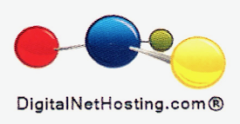Search Engine Optimizer (SEO) – Proposed Scope of Work to Use in Hiring an SEO
Are you planning on hiring an SEO but have no idea of how to properly choose one? Here is a proposed Scope of Work that will allow you to engage them in intelligent questions to understand what they will do for your website.
SEO GOALS FOR ESTABLISHMENT OF SCOPE OF WORK:
- Improve website visibility on major search engines to improve traffic
- Improve website optimization
- Improve conversions to their website
- To appear in Top 10 rankings on Top 3 search engines in their new market (Google, Yahoo and MSN)
- Generate leads from natural search traffic
- Drive an increased volume of visitors
- Build sustainable long term natural search rankings
- Maximize natural search brand visibility
- Improve Social Marketing Optimization
CHALLENGES TO EXPECT SEO TO ADDRESS AND ANSWER:
- Am I in a niche market or a highly competitive market and what that means
- Competitiveness of keywords and real expectations of getting top/first page results
- Lack of rankings on search engines, where you are at and where can you go
- Un-optimized page titles, tags and copy, what is your current SEO situation
- Low link popularity, no page rank, how to build back links
- Site Design
- Technical issues surrounding website coding, excessive use of java or frames, lack of CSS and use of tables
- Mobile Web compatibility and Social Marketing Optimization
SOLUTIONS YOU SHOULD EXPECT TO BE DONE:
- Perform an initial site audit to understand the issues the site is facing
- Perform a competitive website study and work out a unique search engine optimization and placement strategy to achieve top rankings for the web site
- Extensively research keyword phrases, and identify and analyze popular keywords for your website that are most relevant to your specific market demographics that could drive targeted traffic
- Review the site’s pages and decided which ones are best for SEO
- Work with you to choose which keyword phrases belong on which pages of your site based upon what you know about your product, service or brand
- Make site architecture recommendations to ensure that the most important pages of the site would receive the internal link popularity they deserved
- Optimize the content of your website in a manner that make it keyword rich as well as easy-to-understand – descriptive language that speaks to your target audience
- Optimize each page’s Title and Meta description, Header tags for your targeted keyword phrases, each page will be different specific to the keywords targeted.
- Set up Google Analytics and started tracking traffic and conversions on your website
Source by Michael Carrington

